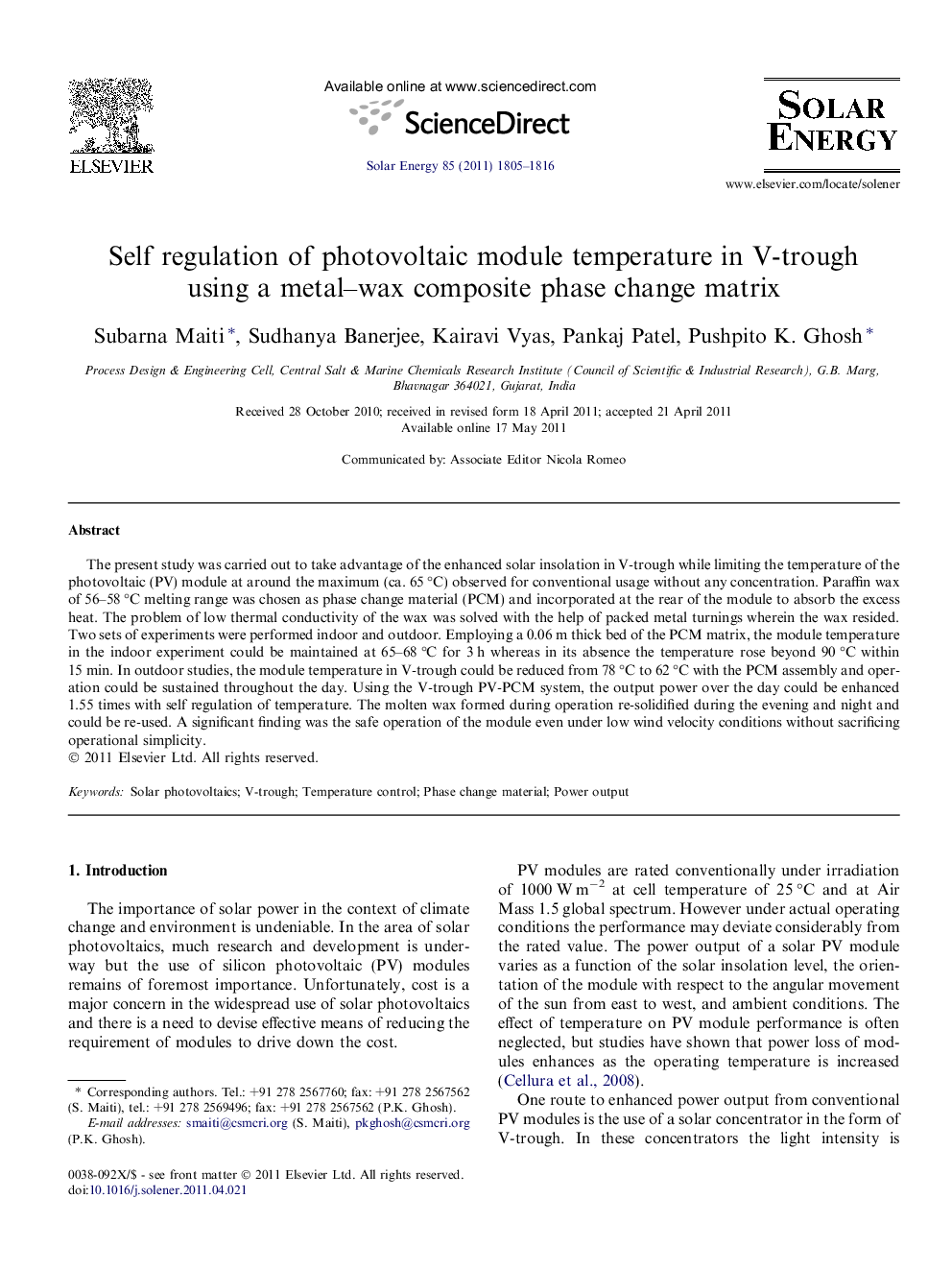| Article ID | Journal | Published Year | Pages | File Type |
|---|---|---|---|---|
| 1550997 | Solar Energy | 2011 | 12 Pages |
The present study was carried out to take advantage of the enhanced solar insolation in V-trough while limiting the temperature of the photovoltaic (PV) module at around the maximum (ca. 65 °C) observed for conventional usage without any concentration. Paraffin wax of 56–58 °C melting range was chosen as phase change material (PCM) and incorporated at the rear of the module to absorb the excess heat. The problem of low thermal conductivity of the wax was solved with the help of packed metal turnings wherein the wax resided. Two sets of experiments were performed indoor and outdoor. Employing a 0.06 m thick bed of the PCM matrix, the module temperature in the indoor experiment could be maintained at 65–68 °C for 3 h whereas in its absence the temperature rose beyond 90 °C within 15 min. In outdoor studies, the module temperature in V-trough could be reduced from 78 °C to 62 °C with the PCM assembly and operation could be sustained throughout the day. Using the V-trough PV-PCM system, the output power over the day could be enhanced 1.55 times with self regulation of temperature. The molten wax formed during operation re-solidified during the evening and night and could be re-used. A significant finding was the safe operation of the module even under low wind velocity conditions without sacrificing operational simplicity.
► Excessive temperature rise of photovoltaic module in V-trough can be detrimental. ► Self regulation of module temperature with metal–wax composite PCM achieved. ► Close match between simulated and observed temperature found. ► Power output over a day enhanced 1.55 times for 1.7 times increase in incident radiation.
